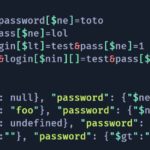No products in the cart.

Is the Future of Cyber Security in the Hands of Artificial Intelligence (AI)? by Ensar Seker It is a fact that machine-learning has taken great steps in recent years, from autonomous tools to virtual assistants, from chatbots to face/object recognition. What about cybersecurity? Chinese philosophy, yin and yang represent how....
Author
Latest Articles
 BlogDecember 28, 2022Cybersecurity in Education: What Parents, Teachers, and Students Should Know in 2023
BlogDecember 28, 2022Cybersecurity in Education: What Parents, Teachers, and Students Should Know in 2023 BlogDecember 15, 2022Remembering Leonard Jacobs
BlogDecember 15, 2022Remembering Leonard Jacobs BlogSeptember 30, 2022VPN Security: A Pentester's Guide to VPN Vulnerabilities
BlogSeptember 30, 2022VPN Security: A Pentester's Guide to VPN Vulnerabilities BlogAugust 9, 2022AppSec Tales II | Sign-in
BlogAugust 9, 2022AppSec Tales II | Sign-in
Subscribe
Login
0 Comments
